
One of the most beautiful and interesting historical attractions in our country is burial places in ancient Iran. These tombs have carved inside the mountains just like a cave. The DOKAN DAVOOD historical tomb in Kermanshah is also one of these places that always attract historic enthusiasts especially during Nowruz. Come along with Alale to get acknowledge this historic tomb that carved in mount.
This historical grave is located at the beginning of the road ANZAL (a village of the same name from the central part of SAR-e-POL-e ZAHAB) and is located about 100 meters from the main road of Kermanshah to Sar Pul Zahab.
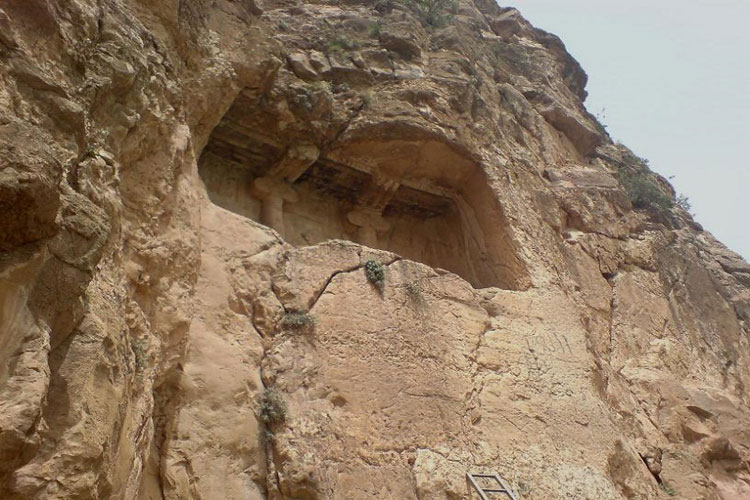
The grave that carved in mountain is different from the Crypt and it is a kind of rocky architecture. The crypt is located above the mountain, which placed the bodies of people to be destroyed by birds and animals, but the grave that carved in mountain was a tomb in the form of a room for burial of one or several people in the mountains, hills or rocks, and has enough room to sit, Putting objects and holding ceremonies. There are different opinions about the age of these graves. Of course, sometimes mistakenly referred to as "ESTODAN"(Crypt), which is different from the grave that carved in rock. ESTODAN were made at the heights of cities or places of living with a circular and cylindrical plan, and it was in fact the Bone keeping location that Zoroastrians put their dead there. As time went on and the population increased in cities and towns, they also changed the way of burial of the dead and transferred them to the cemetery.
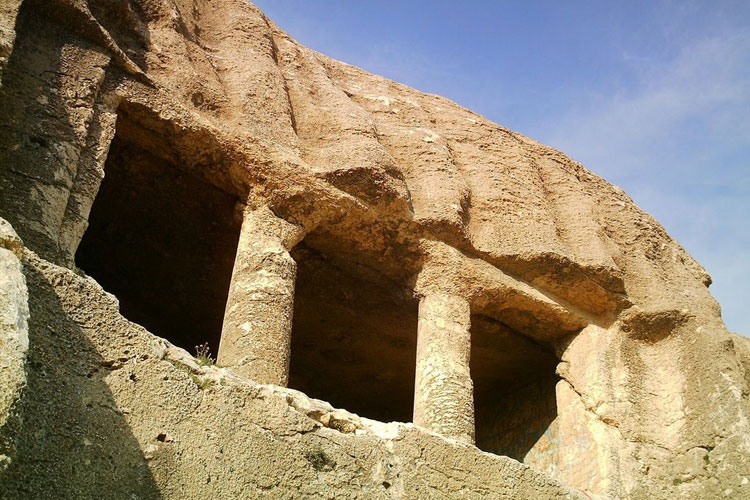
The importance of this research is that this type of architecture is the basis for building the Medes and the Achaemenes tombs in the following periods. The origins of these rocky tombs return to the Urartu civilization, based around the Van Lake in Turkey. In ancient times, humans, by digging natural cliffs on the slopes of the mountains and creating a cavity, came from a small space gradually into a large space and used it as a home or a tomb. This human struggle with rocky cliffs is called rock architecture or bogs. Rocky architecture is not a free and ordinary building material, but a natural rock.
The Iranian graves that carved in rock can be attributed to three different periods: the Medes, the Achaemenes, and the after Achaemenes. According to the research, except for a rock grave in the Hasanlu hill, no rock grave attributed to pre-Median have been found in Iran, but in Turkey, many rocks grave have been discovered in the pre-Median period around the lake of Van (the dominated areas of Urartu). It can be concluded the rocks grave is more closely related to the architecture of the overture than the material and Assyrian root.
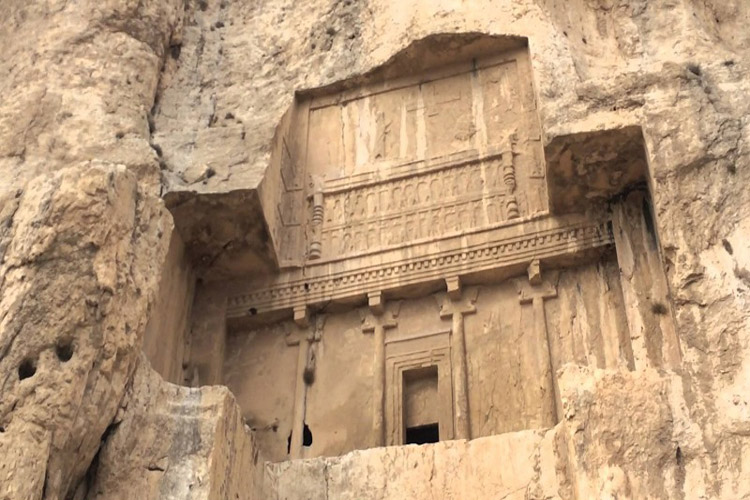
Unlike the Medes, Achaemenes graves have the same shape and design of the cross and vary from 2 to 9 graves. The entrance to the grave is at the intersection of two crossroads and the horizontal line of the column is carved. The upper part is generally embossed and the lower part has no decorations. The first grave belonging to Darius the Great and the last grave of Achaemenes also belongs to Darius III, whose carvings are unfinished.
The graves are divided into three categories in terms of the entrance view; the graves which have a free column in entrance view, such as the grave of DAVOOD, the graves which decorated in entrance with two half-columns, such as the graves of the (DO_DOKHTAR) and (DADVAR), simple or without a column or half column, like the grave of the SAKAVAND
Still, in some parts of the western part of the IRAN, people buried their dead in the family's graves.
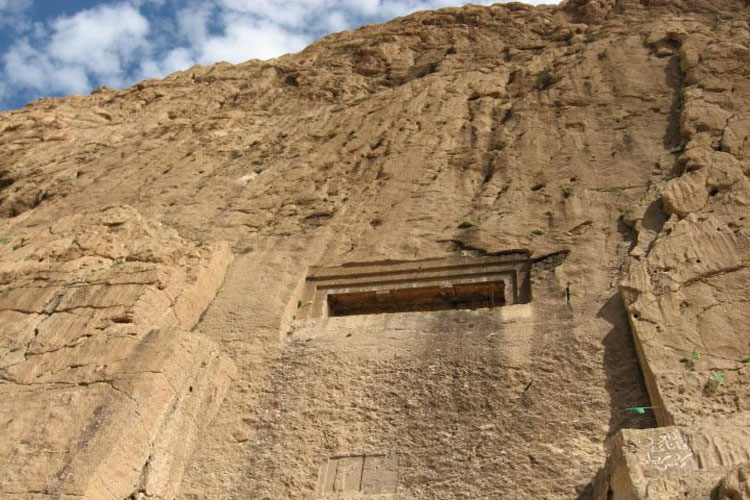
There are various theories about the age of this monument, known among the inhabitants of that region as the KAL DAV and DOKAN DAVOOD. Some believe that the grave is related to the Medes, and DOKAN DAVOOD is also the mausoleum of the last Medes king, ISHTOOIG, which was abandoned by Cyrus the Great from the monarchy, but in the new research it was concluded that this is a member of the Achaemenes era and probably the most prominent feature is the Selukian era. Considering that the tomb of all the Achaemenes kings in Pasargad and Persepolis. This grave should belong to the bloody Achaemenes king Zahak (Cyrus cousin's grandfather). It is said that under this progenitor there is a grandson of Zahak who is praying for the forgiveness of his grandfather. This grave is blessed among the believers of Yarasan religious, it is considered by one of the seven religious personalities of the Yarasan. They go to ceremonies in some years of the year.
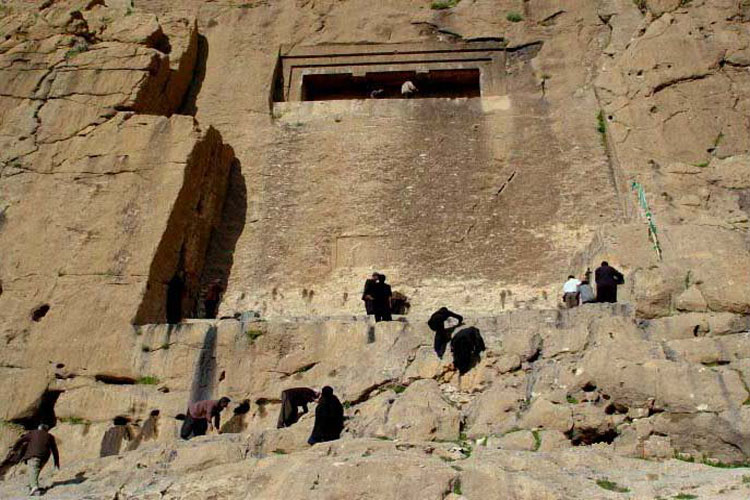
DOKAN DAVOOD grave has a porch in the front (similar to the large Darband grave in the city of Sahna ) with a length of 6.9 meters on the front and 32.7 meters on the back, a height of 6.2 meters and a width of 95.1 meters. The two sides of the tomb's entrance have pillars which only the head is left. In the rear wall of the porch, the entrance is 1 in 1.5 meters, reaching 2.83 meters at 2.31 in 2.81 meters. In the walls of this room there are also 5 shelves for placing the gifts. The ceiling of this room in contrast to the front porch ceiling of the flat, has a crescent shape, and in the corner there is an oval grave with a depth of 70 cm.
A rectangular frame is shaped on an older frame 8 meters below the curtain, in which a full-length person is seen with a profile in the shape of a high dress, with the ears and back of the neck covered. There is also a brush in one hand, holding the other hand upside down.
It has been registered in 1310 with number 152, and is at a height of 12 meters from the ground, making it difficult to access.
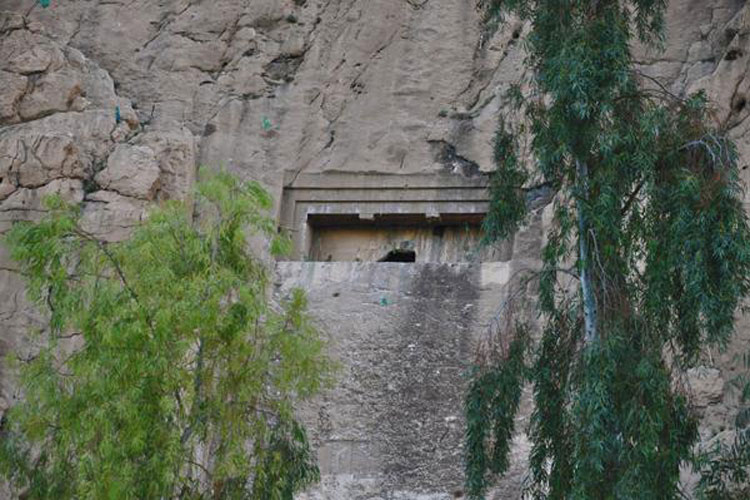
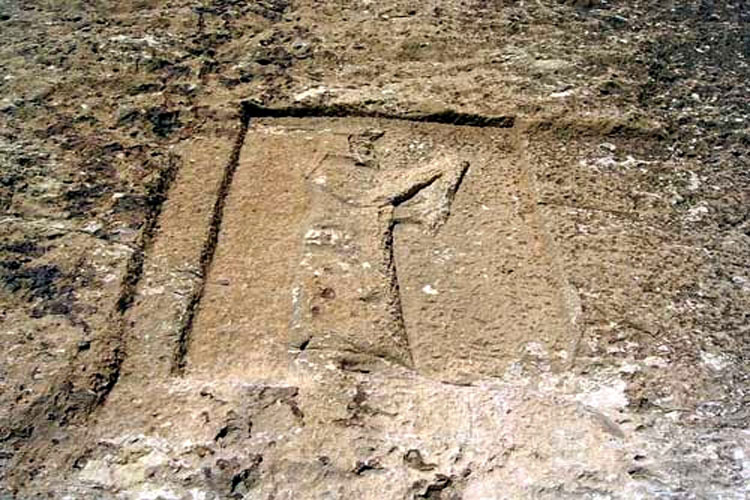
.
Submit Comment